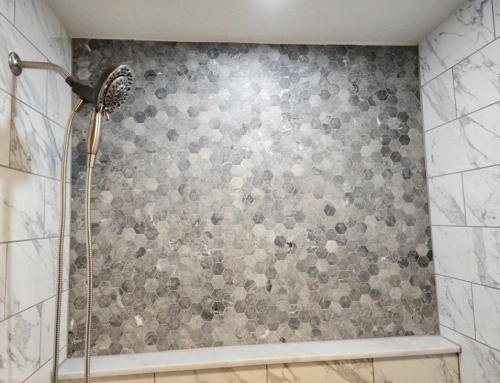Beauty may be in the eye of the beholder, but you can train yours to see like a professional designer by paying attention to these seven fundamentals. Whether you’re transforming your house into you’re the home of your dreams or just sprucing the place up a bit, follow these simple guidelines to find a style that’s right for you.
When redesigning a room, special consideration must be given to the flooring. No other single element of design ties the whole package together as dramatically as your choice of flooring. It sets the tone for all the other decisions you’ll make when piecing together the room’s look and feel.
Gather Your Ingredients
Interior design comprises seven major “ingredients”: color, form, light, line, pattern, texture and space. Before setting out to choose them individually, first think of what ideas or emotions you want your overall design to convey.
For example, “moody” designs are all the rage these days, combining dark tones with luxurious textures such as velvet or aged leather. Dark natural wood or luxury vinyl plank flooring accentuates the effect. It’s well established that darker colors make a room feel “smaller,” so this dramatic style works best in rooms large enough to handle a little visual shrinkage.
Also popular is minimalism, which combines clean lines with solid, typically lighter colors, such as beige, with smooth industrial elements made of aluminum or steel. Light colored wood plank flooring with little visual texture, or large marble tiles with minimal grout lines make excellent minimalist floors.
Other popular design languages include farmhouse, contemporary, mid-century modern and art deco. Look through magazines such as Better Homes & Gardens or websites such as TheSpruce.com to get ideas. When you find a style you like, don’t be afraid to copy the photos you see, just like you would a popular recipe.
And, just like with cooking, don’t be afraid to add some of your own flair, either.
Once you’ve settled on a style (or, if you’re especially adventurous, a combination of styles), think about the seven essential elements of design when choosing furniture, décor, wall color and, especially, flooring.
Color Me Fashionable
When designers talk about color, they mean more than just choosing the paint for your walls. Color permeates the room and can be classified into distinct categories, such as solids or pastels, and even further delineated by where those shades fall on the color wheel, i.e. primaries (red, blue, yellow), secondaries (green, orange, purple) and even tertiaries (pumpkin, turquoise, maroon). Colors can either match or contrast, with juxtaposing color schemes having the strongest visual effect.
How Form Functions
“Form” is just another way of saying “shape.” Some rooms have more curved elements, such as a chaise lounge or sleigh-style bed. Others are more angular, with square tables and framed art. Loose, curvy surfaces evoke a more naturalistic feel, while more stern geometric shapes feel more constructed.
Seeing the Light
You may not want to knock another hole or two in your walls for extra windows, but there are other ways of controlling the amount of light (both naturally and electric) in your room.
Do you like bright rooms where everything is as visible as aisles at the supermarket? Light curtains and strong overhead lighting will help achieve that. Prefer a cozier vibe? Blackout shades and table lamps will give the room an aura of a parlor or study.
Drawing a Line
Think of form, then zoom it out a little. Line refers to the overall direction the elements in a room seem to be flowing. High ceilings and tall windows might create a more vertical tilt, whereas chair railing, long couches and bay windows spread out more horizontally.
Repetition, Repetition, Repetition
The human brain enjoys finding patterns, so repetitive elements in a room make the space more pleasing on a neurological level. Patterns can be geometric (think lots of triangles), thematic (Star Wars, anyone?) or elemental (the table lamps being made of the same brushed aluminum as the ceiling fan, for example).
However, be forewarned, too many patterned elements quickly become chaotic. Choose one or two elements to repeat and leave it at that.
Group Textures
Although textures often do have visual patterns, here we’re dealing with touch more than look. However, that doesn’t mean you should expect to literally touch everything in the room. You can tell at a glance whether something is rough or smooth, and just knowing the textural composition of a room contributes to its emotional feel.
Space: The Final Frontier
In the world of design, “rooms” are often referred to as “spaces,” because, at their essence, that’s what they are—little slices of the universe unto themselves. Some spaces are small and cozy, some are open and grand, and many more fall somewhere in between.
Would you like more design ideas? Check out this article.
Whether you remodel homes for a living, or are ready to take your first shot at design, Flooring Masters & Professional Remodelers have extensive experience working with interior designers of all skill levels, from professionals to amateurs.
Call or email Flooring Masters & Professional Remodelers today for a free consultation. We know you only want the best in flooring. That’s why it’s important to hire the best in the business, and at Flooring Masters & Professional Remodelers, we can guarantee you that’s us.
Flooring Masters & Professional Remodelers have been flooring and remodeling Kentuckiana for over 30 years. Our certified installers have the ingenuity and know-how to assist you in choosing the perfect floors for your home. Don’t take matters into your own hands—let us guide your next project.











